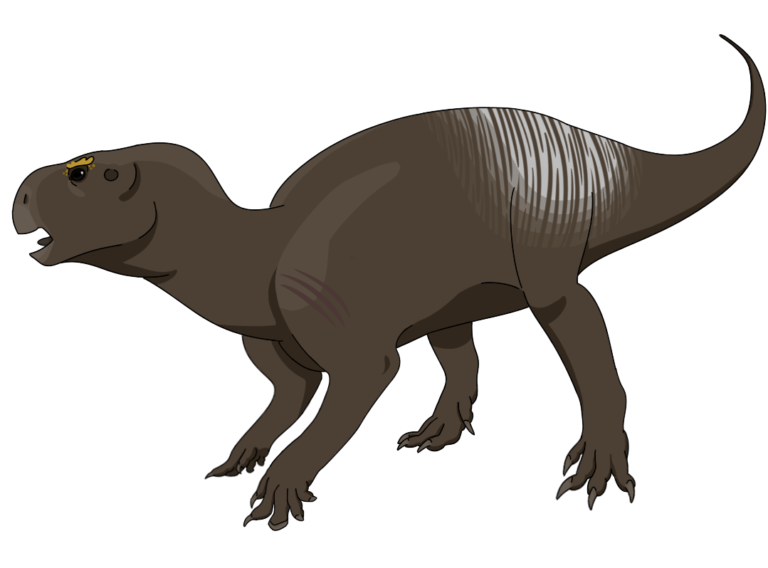
Tenontosaurus tilletti is a widespread Cretaceous ornithopod with fossil evidence all over the western half of North America.
This ancestor of Iguanodon stood around five feet at the shoulder, grew to exceed lengths of twenty feet, and is estimated to have weighed somewhere between one and two thousand pounds. It was able to walk on four legs or rear up and run on two, using its long tail stiffened with tendons as a counterbalance. On two legs, adults reached about ten feet tall, which allowed them to browse from trees.
Smooth stones collected from different locations have been found in this ornithopod’s gut region, suggesting that, like modern birds, they swallowed rocks to help crush food as it passed through their stomachs. These stones are called gastroliths, and they suggest that though Tenontosaurus had a sharp beak and heavy-duty grinding teeth, it may have needed a little extra help breaking down its diet, which included both soft leaf matter and tough tree bark.
Tenontosaurus remains are often associated with the raptor Deinonychus. Not only are their fossils often found in close proximity—some Tenontosaurus bones bear scars from possible raptor attacks. Paleontologists have discovered groups of young Tenontosaurus buried together, suggesting that juveniles may have herded for safety or possibly stuck with their parents until they were large enough to hold their own against predators.
Though young Tenontosaurus were threatened by lone Deinonychus, it seems a full-grown Tenontosaurus made for a tough target. Much like elk, cattle, and other large, modern herbivores, Tenontosaurus adults were able to take, and recover from, surprising amounts of damage—though not without risk of infection. At full size, it’s likely they could only be downed by multiple, mobbing Deinonychus, or the apex carnivore Acrocanthosaurus.
Though T. tilletti is quite common, the Glen Rose area is home to its own species of Tenontosaurus, T. dossi. This dinosaur can be distinguished from T. tilletti by its more slender, horse-like snout.
Association with Deinonychus and gastroliths:
Association with Deinonychus and possible scarring:
Injury, healing, and infection in a Tenontosaurus that took a bone-breaking tumble:
Possible juvenile Tenontosaurus herding behavior:
T. dossi’s debut paper:
Honorable mention–a paper all about Tenontosaurus hands that really helped with my illustration:
meet tenontosaurus
Tenontosaurus tilletti appears in chapters 11 and 12 of Cecelia and the Living Fossils.
Teenage necromancer + dinosaur bones. What could go wrong? See for yourself.
